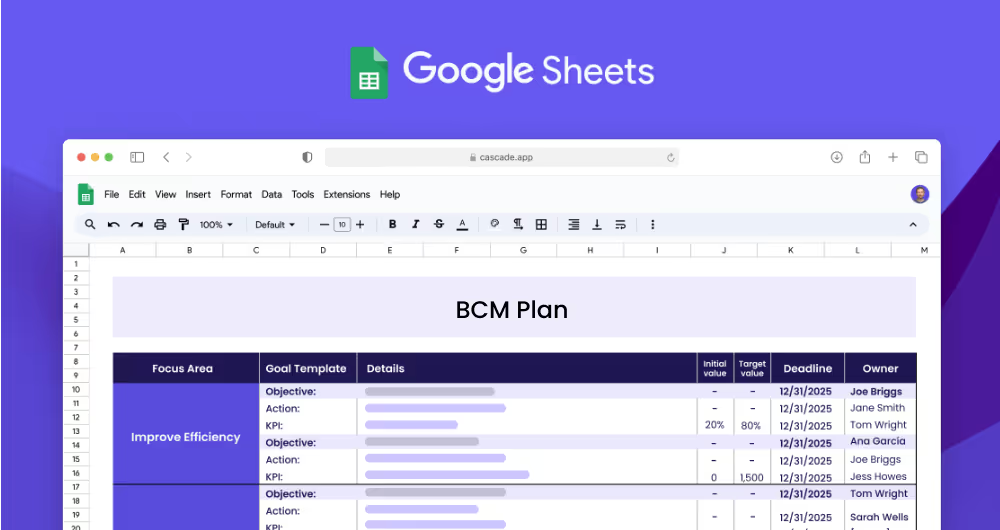Business Continuity Management (BCM) plans are used by organizations in various industries to ensure resilience in the face of potential disruptions. A BCM plan is a comprehensive set of strategies and protocols that help organizations prepare for and respond to unexpected circumstances. It covers areas such as risk assessment, business impact analysis, and business continuity strategies. A BCM plan is an essential part of any organization's risk management efforts.
Each focus area has its own objectives, projects, and KPIs to ensure that the strategy is comprehensive and effective.
The BCM Plan Template is designed for organizations of any size looking to develop or refine their BCM plan. This template provides a framework for creating a comprehensive BCM plan that addresses various areas related to business continuity and disaster preparedness. The template is easy to use and can be adapted to fit the needs of any organization.
Focus areas are the major areas of focus within your BCM plan. Examples of focus areas may include establishing business continuity, establishing risk management, and establishing business impact analysis. Each focus area should have a set of objectives, actions, and measurable targets (KPIs).
Objectives are the goals that you want to achieve with your BCM plan. For each focus area, you should define a set of objectives that are related to that area. Objectives should be specific and measurable. Examples of some objectives for the focus area of Establish Business Continuity could be: Develop BCM Framework, and Develop BCM Strategies.
KPIs, or key performance indicators, are measurable targets that help you gauge the success of your BCM plan. For each objective, you should define a set of KPIs that measure progress toward that objective. KPIs should be specific, measurable, and achievable. An example of a KPI for the focus area of Establish Business Continuity could be: Increase BCM Process Completion Rate.
Projects are the actions that need to be completed in order to achieve the objectives and KPIs. For each KPI, you should define a set of related projects that will help you reach that target. Projects should be actionable and achievable. An example of a project related to Establish Business Continuity could be: Create BCM Governance Policies.
If you’re ready to leave behind cumbersome spreadsheets and achieve swifter, more efficient results, the Cascade Strategy Execution Software is your next step forward. Cascade delivers a dynamic, integrated platform that not only supports the creation and management of your strategic plans but also enhances real-time updates, centralized collaboration, and automated reporting. This robust system ensures all team members remain aligned and can adapt swiftly to changes, leading to effective strategic outcomes. Sign-up for free or book a demo with one of our strategy experts and start optimizing your strategic planning today.


